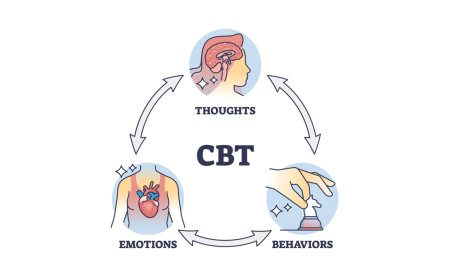How to Calculate Monthly Mortgage Payments Accurately
Learn how to calculate monthly mortgage payments accurately with practical examples and expert insights. Discover how a Property Development Course can help you master real estate finance and make smarter investment decisions.
Buying a property is one of the most significant financial decisions most people will ever make. Whether you’re purchasing your first home, investing in real estate, or developing a property portfolio, understanding how to calculate your monthly mortgage payments accurately can save you from future financial surprises. It helps you make informed decisions, budget effectively, and plan your investments with confidence.
In this guide, we’ll walk you through the simple yet crucial process of calculating your mortgage payments the right way, along with some professional insights to help you manage your finances more efficiently.
Understanding the Basics of Mortgage Payments
Before diving into the calculations, it’s important to understand what makes up a monthly mortgage payment. Typically, a mortgage payment includes four main components — Principal, Interest, Taxes, and Insurance (often referred to as PITI).
The Principal is the amount you borrowed from the lender. Interest is the cost you pay for borrowing that money, calculated as a percentage of your loan balance. Taxes and Insurance are often added to ensure property protection and compliance with local regulations.
For property investors and developers, knowing how these factors combine is essential. It allows you to evaluate whether a particular property investment aligns with your financial goals. If you’re pursuing a real estate career or planning to develop multiple projects, learning the financial aspects through a Property Development Course can be incredibly valuable.
The Formula for Calculating Monthly Mortgage Payments
The standard formula used by lenders to calculate monthly mortgage payments is based on the loan amount, interest rate, and loan term. The mathematical formula looks like this:
M = P [ i(1 + i)^n ] / [ (1 + i)^n – 1 ]
Where:
-
M = Monthly mortgage payment
-
P = Principal loan amount
-
i = Monthly interest rate (annual rate divided by 12)
-
n = Total number of payments (loan term in years × 12)
Let’s break it down with an example:
Suppose you’re taking a mortgage of £200,000 at an annual interest rate of 5% for 25 years.
-
Monthly interest rate = 0.05 / 12 = 0.004167
-
Total payments = 25 × 12 = 300
Plugging these values into the formula:
M = 200,000 × [ 0.004167 × (1 + 0.004167)^300 ] / [ (1 + 0.004167)^300 – 1 ]
M = £1,169.18
So, your monthly mortgage payment would be approximately £1,169.
While online calculators can do the math for you, knowing how it’s calculated gives you a deeper understanding of your investment.
How Interest Rates Impact Your Payments
One of the biggest factors that affect your mortgage payments is the interest rate. Even a small difference in the rate can significantly impact the total cost of your loan.
For instance, let’s say you have a £250,000 mortgage for 25 years. At a 4% interest rate, your monthly payment might be around £1,320. But if the rate increases to 5%, that payment could rise to about £1,460 — that’s an extra £140 every month, or over £42,000 more across the life of the loan.
If you’re planning to develop or invest in properties, learning to analyze market interest trends and lender policies is crucial. This type of knowledge is often covered in a Property Development Course - where students explore financial modeling, real estate valuation, and investment analysis.
Considering Additional Costs and Fees
While principal and interest make up the bulk of your mortgage payment, it’s essential not to overlook additional costs such as property taxes, home insurance, and maintenance. Some lenders may also charge arrangement fees, valuation fees, or early repayment penalties.
Adding these costs to your monthly calculation ensures you’re budgeting accurately. For example, if your property tax and insurance together cost £2,400 annually, that’s £200 per month — which should be added to your total mortgage cost.
When developing properties, these hidden expenses can directly affect your profit margins. Smart investors always calculate the true cost of ownership before committing to any purchase. This is where professional training or structured learning, like a Property Development program, becomes extremely helpful.
Using Online Tools vs Manual Calculation
Many online mortgage calculators can instantly show your estimated monthly payments based on input data like loan amount, interest rate, and term. These tools are convenient, but they often provide only an overview.
Manual calculations, on the other hand, allow you to adjust for variables such as fluctuating interest rates, payment holidays, or additional principal payments. Understanding both methods gives you an edge, especially if you’re evaluating multiple property investments or financial strategies.
A combination of both manual knowledge and digital tools helps property developers make better financial projections — something emphasized in advanced real estate learning programs like the Property Development Course offered by Open Learning Academy.
Tips to Manage and Reduce Mortgage Payments
Even if your monthly payment feels high, there are several ways to reduce it or make repayment easier:
-
Make Extra Payments: Paying more than the minimum can drastically reduce your loan’s total interest over time.
-
Refinance Your Mortgage: If interest rates drop, refinancing at a lower rate can save thousands of pounds.
-
Increase Your Deposit: A larger down payment reduces the loan amount and, therefore, your monthly burden.
-
Choose a Longer Term (Cautiously): Extending your loan period can lower your monthly payments but may increase overall interest costs.
-
Maintain a Good Credit Score: A higher credit score can help you qualify for better mortgage rates.
By implementing these strategies, property owners and developers can improve cash flow and maximize long-term profitability.
Final Thoughts
Calculating monthly mortgage payments accurately is not just about numbers — it’s about making informed financial choices. Understanding every component of your mortgage gives you control over your investment decisions, whether you’re buying your first home or managing a property portfolio.
For anyone serious about entering the property market or learning how to evaluate investments professionally, enrolling in a Property Development Course is an excellent next step. It helps you understand every financial, legal, and strategic detail involved in real estate — from calculating mortgages to managing large-scale developments.
Learning these skills early will empower you to approach property investment with confidence and precision — ensuring your money works smartly for your future.


























